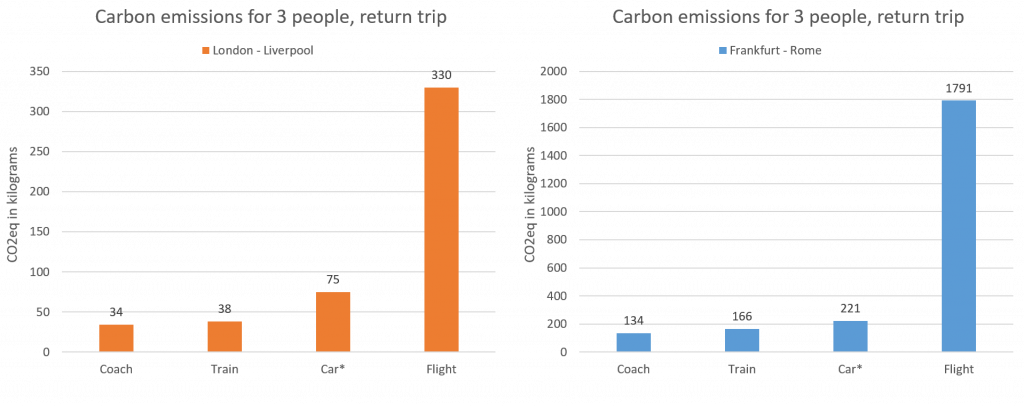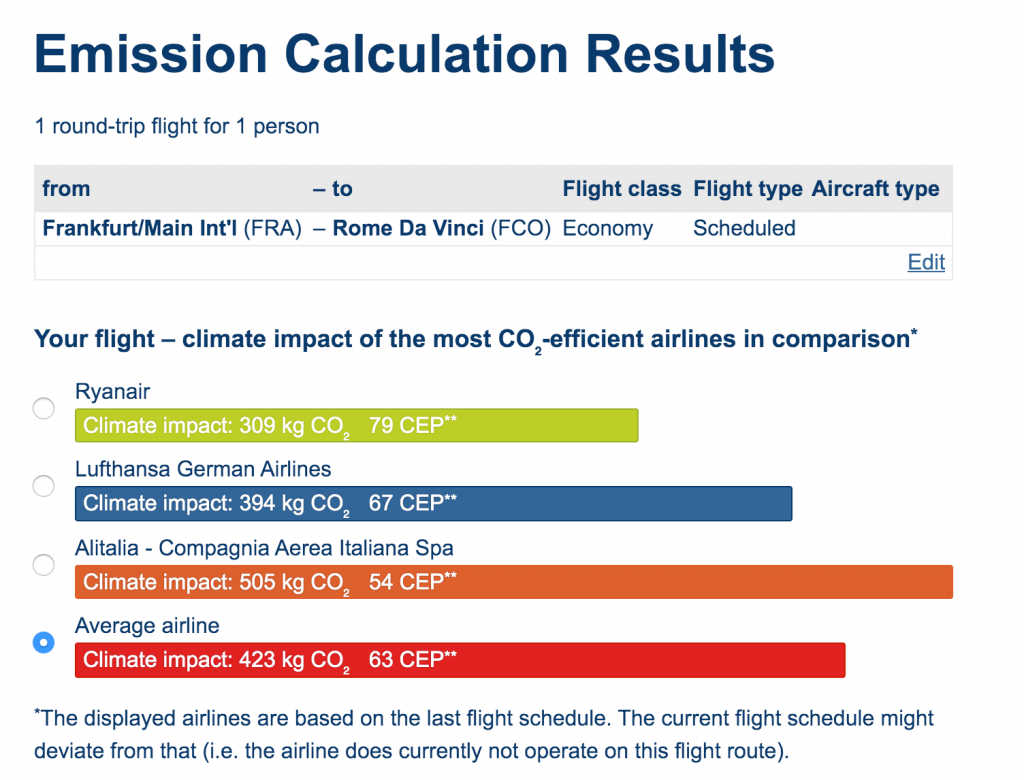It is Friday again and for the second part of our series we have prepared some new advice on climate change mitigation for you. While last week’s topic was about home emissions, this week we will be analysing one of the most carbon-heavy activities – transportation. In fact, one fifth of the overall greenhouse gas emissions from a typical German household are generated through transport. Bad news first: transport emission average 2.2t CO2 per person – taking up almost the entirety of a person’s yearly carbon budget. However, the good news is that most of it can be avoided.
The way we get around has a great influence on the climate. Depending on the means of transport, emissions average between 32 and 201 grams of CO2 per kilometre per person, according to figures by the German Ministry for the Environment. Travelling by coach emits the least whereas flying emits the most. On the other hand, emissions related to car travel highly depend on the number of passengers. Why? We have designed two examples to help you visualize:
Our first example is a round-trip from Berlin to Munich, our second one being a round-trip from Frankfort to Rome, both of these with three passengers.

Time, money, climate – are we trying to square out the circle?
Of course, when we travel, our carbon footprint is the least of our worries – how long does it take? How much will it cost? For domestic or short distance flights and after weighing in the time spent at check-in, security and boarding, your overall travel time might not be much shorter than on a train journey. Adding to this, airports can be quite the hassle to get to and from, as they often lie far out of the city centre. Trains on the other hand offer a less fragmented journey, giving you the opportunity to relax or work.
In terms of costs, coaches tend to be the cheapest solution – and the least damaging to the climate. Trains have the reputation to be pricy – but it actually depends on the ticket type; and last-minute booked flights can get expensive as well. With enough planning, it is definitely possible to get some affordable train tickets.
Holidaying at home
Flights might have higher emission, but they also allow us to reach faraway destinations in a matter of hours – making Thailand or the USA seem like a stone throw away. Without the possibility to fly, spending a weekend in Barcelona would hardly make any sense – buses and trains can only get us so far. However, we tend to forget that brilliant getaway destinations also await us right around the corner… Before leaving for exotic destinations, why not discover the hidden gems of your home region?
Wonderful and handpicked German destinations can for example be found on Katzensprung Deutschland. The Rhön region, Thuringian forest, Lüneburg heath… some instagram-worthy landscapes are right down the road. And if you want to get lost in the singsong of a foreign tongue rather than constantly overhearing other people’s conversations, then enorm Magazin has the perfect list of easy-to-reach destinations in Europe. Instead of jetting out to the Grand Canyon, why not visit the Verdon Gorges and the beautiful panoramas of the South of France? And why go all the way to Brazil, if the sand on Portugal’s beaches is just as fine?
Flying done right
Sometimes flying is just plain necessary. But even then, you can influence the effect it has on the climate to a certain extent: distance, number of passengers, flight class, airline, and layovers all affect the amount of carbon emission per passenger. For example, economy class is more efficient than business or First Class. Take-off and landing burn large amounts of kerosene, therefore choosing a direct flight is often the more climate friendly option. Further, on common air routes you can choose between different airlines, some being more efficient than others.

For now, no flight is carbon neutral, and in order to address its adverse effects on the climate, offsetting is a good option. Offsetting consists of donating money to projects that help avoid carbon emissions somewhere else, for example through the use of efficient cook stoves in Rwanda , a biogas plant in Nepal or solar homes in Lesotho.
The amount of carbon in the air remains thereby unchanged. All of the atmosfair’s projects also help support families in developing countries of the Global South and work towards achieving the UN’s Sustainable Development Goals. More information about atmosfair’s projects can be found here.

Read more about climate action in our #FridaysForFuture series:


 Share
Share Tweet
Tweet